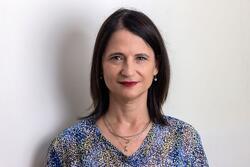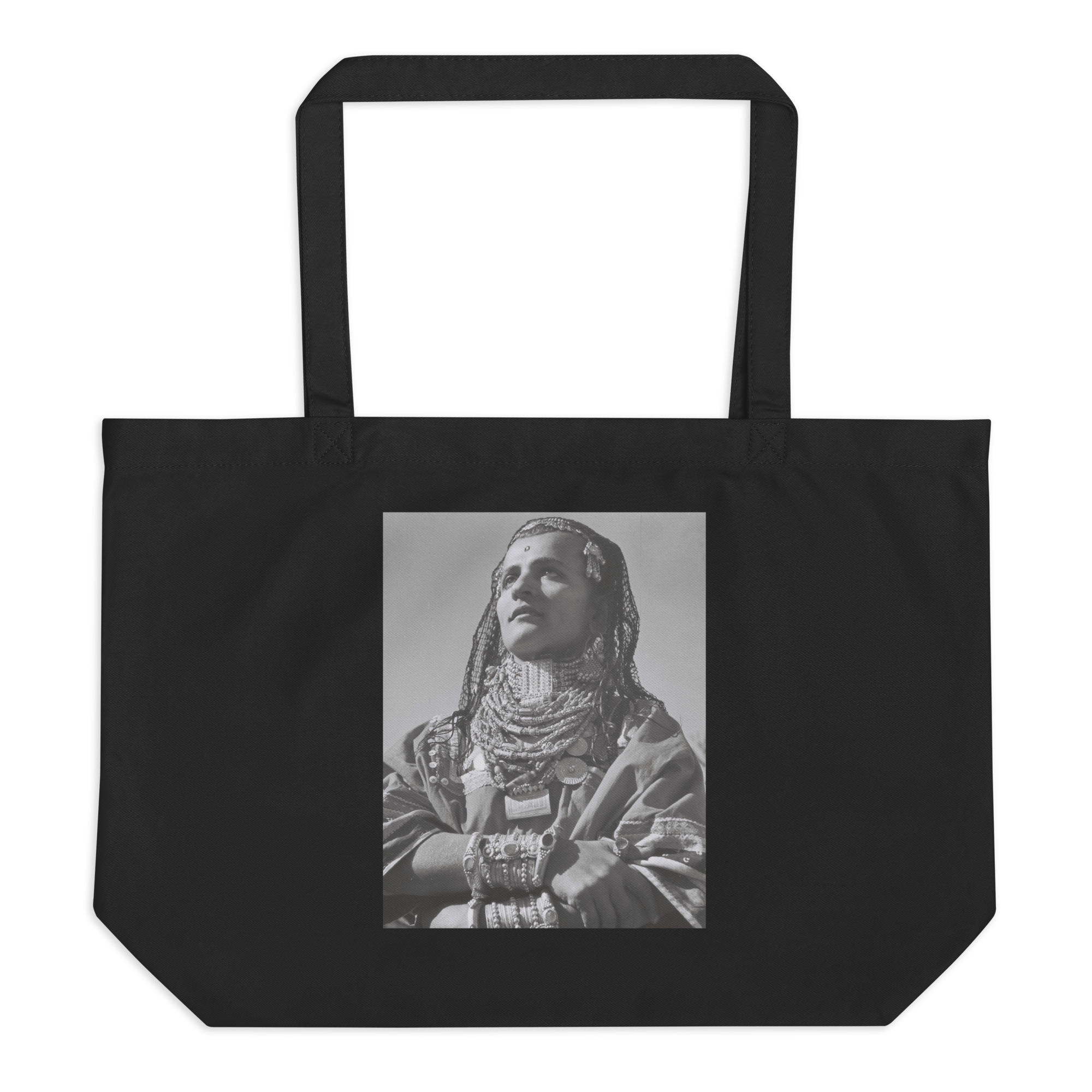Podcast Discussion Guide: Can We Talk?: An Orange Belongs on the Seder Plate Like...
Overview
- Can We Talk? is the podcast of the Jewish Women’s Archive highlighting the voices and stories of Jewish women and the issues that shape their public and private lives.
- Bringing the wisdom of Jewish women, and their voices, into diverse educational settings is an opportunity to enrich the fullness of learners’ understandings of what it means to be a Jew and how our values shape our identities.
- This Discussion Guide for the episode An Orange Belongs on the Seder Plate Like . . . focuses on the story of how the orange came to be an item included on the seder plate, the narratives around this innovation, and the tensions around LGBTQ inclusion in Jewish life.
Essential Questions
- How do traditions evolve and shift throughout time to reflect the current values and beliefs of a community?
- How do the stories we tell shape our understanding of traditions and customs?
- Why has it been easier in many Jewish spaces and families to embrace women’s inclusion rather than LGBTQ inclusion?
Learning Outcomes
- Learners will understand the power of storytelling in shaping tradition.
- Learners will understand the authentic story of how the orange came to be added to the seder plate.
- Learners will reflect on the Passover/holiday traditions in their own family, thinking about what has remained the same and what has changed.
Preparation
The recording for Can We Talk? An Orange Belongs on the Seder Plate Like . . . is available here. Transcript available here. For those who need a more basic introduction to the seder plate, here is a video from the Jewish Museum.
Educators and facilitators are invited to listen to the episode and read through the transcript prior to the discussion. Segments have been identified below to listen to as a group activity; however, the whole episode is 19 minutes long, and in some cases you may want to listen to the whole episode.
Texts in blue boxes below provide framing that educators can adapt as a script. Texts in green boxes are taken from the podcast transcript.
Discussion
Introduction to Discussion and Podcast Excerpts
As you welcome learners into the conversation, you may want to offer framing to ground the discussion in Jewish ritual, and to introduce the speakers and content of the conversation:
The Passover seder is perhaps one of the oldest “experiential” educational rituals. Designed to enact the historical memory of the Jewish experience of the exodus from Egypt, the symbolic foods on the seder plate and the recited words of the Haggadah offer participants the ability to see themselves as though they themselves had come out of Egypt.
Although we might think of the symbols on the seder plate and the words of the Haggadah as being fixed and static, the process of canonizing the seder has been dynamic over the centuries and is still ongoing! To this day, many families, institutions, and individuals create their own Haggadot, adapting the traditional texts and including their own, to lift up their unique stories and values. In recent years, people have begun adding additional symbolic foods to the traditional seder plate. These foods are added to represent particular values or issues that individuals or families want to focus on, often to interpret the Passover theme of liberation in new and relevant ways.
Since the 1980s, many people have added an orange to the seder plate. In this podcast excerpt, we will learn that the story that was often transmitted about why we put an orange on the seder plate was incorrect! Susannah Heschel, Professor of Jewish Studies at Dartmouth College, tells the story of how she came up with the idea of placing an orange on the seder plate and how the story changed over time.
Listen to 7:47-10:28
Transcript:
Susannah: But I picked an orange for the following reasons. First of all, I passed it around the table. Everybody took a segment of orange. They said the blessing over fruit, and they were to eat the segment of orange, out of solidarity with gay men and lesbians, and then spit out the seeds of homophobia.
So I pointed out that you never peel an orange and find that one segment is missing. It's never happened. And that's what it means to be a community. You don't take somebody out because they're gay or lesbian or whatever, and everybody sticks together like the segments stick together. And if gay men are getting attacked by a horrible disease1, we stick together.
Nahanni: So how did the word spread about this new tradition that you had created?
Susannah: So when I was giving lectures about feminist issues, I mentioned this as one of several new feminist traditions, like Rosh Hodesh for example, different things that had sprung up. And then after a while I started hearing from people the following story: That I had been giving a lecture about feminist issues in Miami Beach, and a man stood up in the Q-and-A period and chastised me and said, “A woman belongs on the bimah like an orange on the seder plate!”
Now this has never happened, but people were coming to me and saying, “I'm putting an orange on the seder plate because of what that man said to you in Miami Beach.”
Nahanni: So, uh, it's just simply a rumor that got started somehow. You never found out the source of it?
Susannah: I never found out the source of it and it's a rumor that's spread. And the problem is that it's spread far and wide and people really liked it. And that bothers me.
Nahanni: Why does that bother you?
Susannah: It didn't happen, first of all. And then it's taking my idea and putting into his mouth, you see—the orange. And it's erasing the homophobia altogether. And it's saying what women shouldn't be on the bimah? Well, women were on the bimah already.
Nahanni: Why do you think people liked it so much?
Susannah: Well, of course, what it shows us is the homophobia that was so rampant that they liked a story where the homophobia was removed, was no longer the issue. In other words, putting an orange on the seder plate as some kind of symbol against homophobia and spitting out the seats to repudiate homophobia, that made them so uncomfortable that they had to turn the whole story around, which is just an indication of how important that orange still is.
Explanation and Discussion
For adult and high-school aged learners, offer the following framing and then listen to another excerpt. For younger learners and/or if you have less time, you may want to offer the framing and then move directly into discussion.
Is it important that we understand the reason why a custom or tradition begins? For so many of our rituals and mitzvot, we have thousands of years of texts that help guide our practices. How does having something so recently developed, without a textual or rabbinic guide, give us the opportunity to make new connections and meanings? Is it important to know the origin of a practice, or is the interpretation just as valid?
Now we will listen to a short conversation between the podcast host, Nahanni Rous, and her cousin Anya, with whom she first experienced the orange on the seder plate.
Listen to: 13:34-17:18
Nahanni: So do you remember any talk about LGBTQ inclusion at our family seders back in the ‘90s or whenever this was?
Anya: No, definitely not. I don't think that we even said, like, the word “gay” casually in any kind of context at our family seders or otherwise.
Nahanni: Yeah. What do you think it would have meant to you to have our family discussion about the orange be a celebration of gay and lesbian and queer Jews, the way Susannah Heschel originally intended?
Anya: When I first started, like, really coming into my queer identity, which was in my early 20s, you know, I think I came up against what a lot of people come up against— just all the messages that it wasn't OK to be gay. Those were messages from society as a whole.
You know, it was such a beautiful, rich thing for me to really claim my identity and experience later on, when I got to my early 20s. But I would've loved if there were more models for me around that as a young person. I think if there had been somebody that had brought, of course, the right historical story of the orange, but, you know, actually, in any context, talked about LGBT inclusion at our seder table in those days, I think it would have—even if people had feelings about that—it would have made all of us have to consider and confront and look and feel. You know, there's just something about, like, uttering that, that just puts a stake in the ground of, like, this is good and worthwhile and important for us to think about together.
Nahanni: For you, what does the symbol do to kind of help bridge queer and Jewish identities?
Anya: Part of what I also felt, I think, when I started coming into my queer identity, was feeling more distanced from Jewish observant communities, because I didn't see that represented. And so I do feel like I felt, you know, my own distancing from more observant and religious communities, when that had been something that was so meaningful and rich and an important part of my life up to then.
So the orange is, you know, an opportunity to say and claim, like, they shouldn't be in opposition, being queer and Jewish. This, like, luscious, sensual connected, you know, vibrant part of our community is part of our rituals. I think maybe the orange is an aspiration that it will feel that we, as a community, are strongest in our diversity.
After listening to these excerpts, divide learners into small groups to address the following questions:
Discussion Questions - Adult Learners
- How does the addition of an orange to the Seder plate reflect the evolving nature of Jewish ritual? What does this change suggest about the flexibility or rigidity of tradition?
- What do these competing narratives about the orange on the seder plate reveal about who has power to innovate in Jewish ritual?
- How do the competing narratives surrounding the orange’s origin reinforce the idea that rituals are shaped by interpretation as much as by history? Does Susannah Heschel’s original intent still matter?
- Are there any additional items that your family places on the seder plate? What do they symbolize and how do you share their meaning with others?
Discussion Questions - Grades 9 - 12
- The seder plate has been around for a long time, but adding an orange is a more recent change. What does this tell us about how traditions can evolve over time?
- Why do you think different people tell different stories about adding the orange to the seder plate? How does this affect the meaning of the ritual?
- If people assign different meanings to the orange, does that change its meaning? Is it important to know why the orange was originally added? Who do you think gets to decide what symbols in a ritual represent?
- Some people didn’t like the idea of adding an orange to the seder plate. Why do you think people resist changes to traditions? Do you think traditions should stay the same, or is it important to let them change?
- Some families choose to put an orange on their seder plate, while others don’t. What does it mean when a new symbol or ritual becomes accepted by large parts of a community, but not by others? Are there any additional items that your family places on the seder plate? What meaning do you assign to those items and how do you share their importance?
Discussion Questions - Grades 4 - 8
- The seder plate has been used for a long time, but adding an orange is something more recent. What does this tell us about how traditions can change over time?
- Why do you think different people tell different stories about adding the orange to the seder plate?
- If different people think the orange represents different things, does its meaning change? Who do you think gets to decide the meaning of special objects in a celebration?
- Some people didn’t like the idea of adding an orange to the seder plate. Why might some people want to keep traditions the same? Do you think it’s okay to change traditions? Why or why not?
- Some families put an orange on their seder plate, while others don’t. What does this say about how people can practice the same holiday in different ways?
- Are there any additional items that your family places on the seder plate? What stories does your family tell about those items?
Closing Circle (Activity)
To conclude this session, let’s think about the ways that our family Passover seders, or other rituals, reflect our values, both implicitly and explicitly. How can we add our own experiences and stories to the seder ritual?
The facilitator should invite participants to share their discussion responses. You may also conclude in the following ways:
- Adult learners and high school students can share items that they have added to the seder plate OR items that they would consider adding this year, and which values those items represent.
- Younger learners can draw a picture or share about what new item they would add to their seder plates, and why.
Access a Google Docs version of this discussion guide.
1 Susannah Heschel is referring to the AIDS epidemic, referenced earlier in the episode. For more information, please see the CDC’s history of the AIDS Epidemic in the United States.
This discussion guide was created by Danielle Kranjec and Erez Zobary as part of the Twersky Education Fellowship 2024-2025


